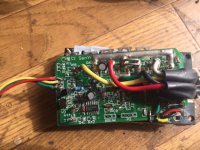newbiehere
100 mW
- Joined
- Oct 8, 2018
- Messages
- 46
ok thanks I will check for it
was wondering if the halls LED test could be switched in, for ex. on a display? I have an arduino dispay for speed, voltmeter etc, would like to switch in the led sequence just to see if they are working if in a field test situation, would that connected in parallel, upset the halls operation I wonder...?
was wondering if the halls LED test could be switched in, for ex. on a display? I have an arduino dispay for speed, voltmeter etc, would like to switch in the led sequence just to see if they are working if in a field test situation, would that connected in parallel, upset the halls operation I wonder...?



